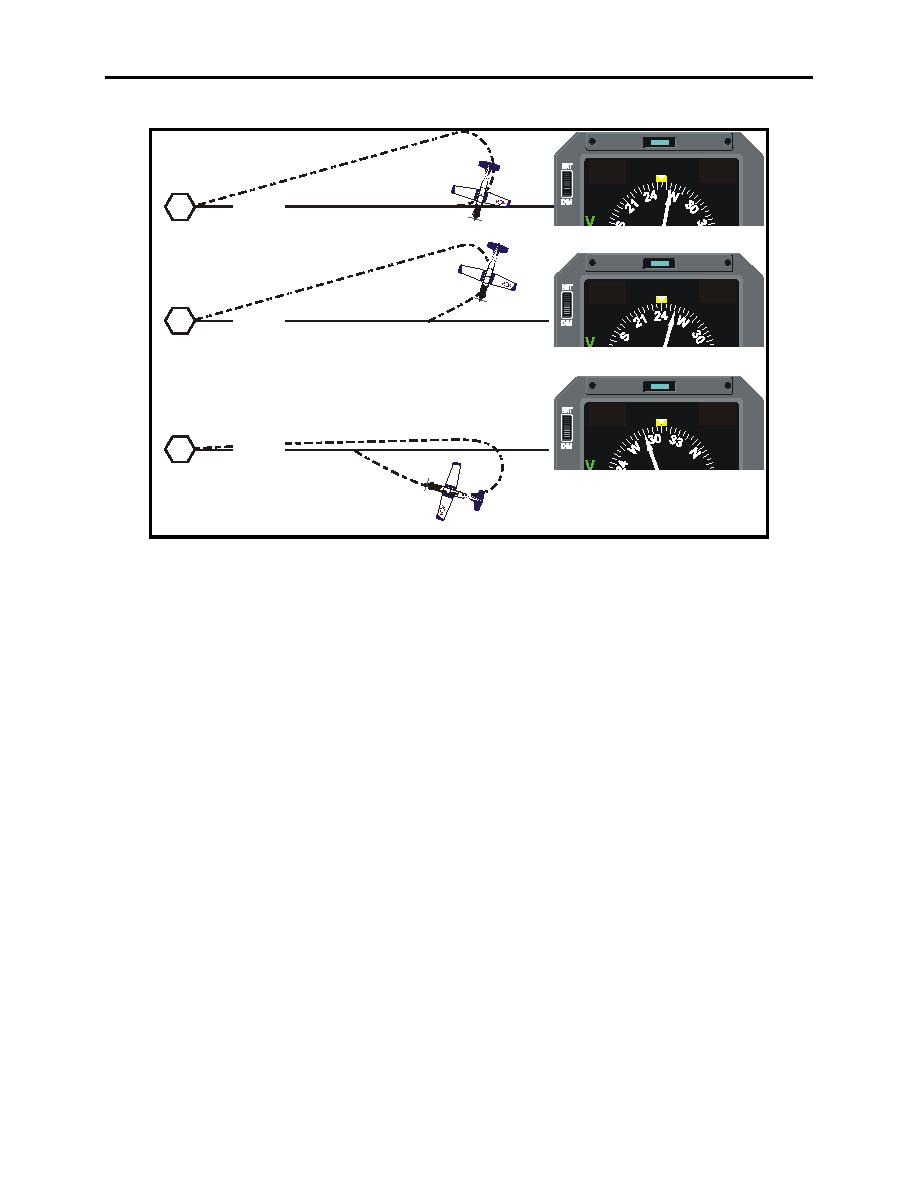 |
|||
|
|
|||
|
Page Title:
Figure 4-15 Tail Radial Turn II |
|
||
| ||||||||||
|
|  T-6A INSTRUMENT NAVIGATION
CHAPTER FOUR
Aircraft will rollout on
course at end of turn.
360
360
A
090 R
Undershoot - stop turn with
Double-the-Angle intercept.
360
360
B
090 R
Overshoot - continue turn and
stop with Double-the-Angle intercept.
360
360
C
090 R
Figure 4-15 Tail Radial Turn II
NOTE
The purpose of the DTA intercept is to provide for a manageable
intercept of the holding course. With strong crosswinds, a DTA
intercept may not be sufficient. In this event, use a greater than
DTA intercept, up to 45.
The second time the aircraft crosses the station, commence the no-wind orbit. This orbit is flown
as if there were no wind to compensate for. If this was true, you would:
1.
Roll out of your inbound turn on the holding course.
2.
Take exactly 1 minute to reach the holding fix (for timed holding).
If the above conditions are not met, this indicates there is a wind. Just how far and in what
direction you deviate from these 2 conditions allow you to determine time and heading
correction factors. Applying these factors to a no-wind orbit gives you a correction orbit.
Commence the no-wind orbit as follows:
1.
Direct a standard rate turn. Turn right for standard holding, left for nonstandard holding.
2. Direct the pilot to roll out of the turn on the outbound heading to parallel the holding
course. This heading will be the same as the reciprocal of the holding course.
INSTRUMENT NAVIGATION
4-37
|
|
Privacy Statement - Press Release - Copyright Information. - Contact Us |